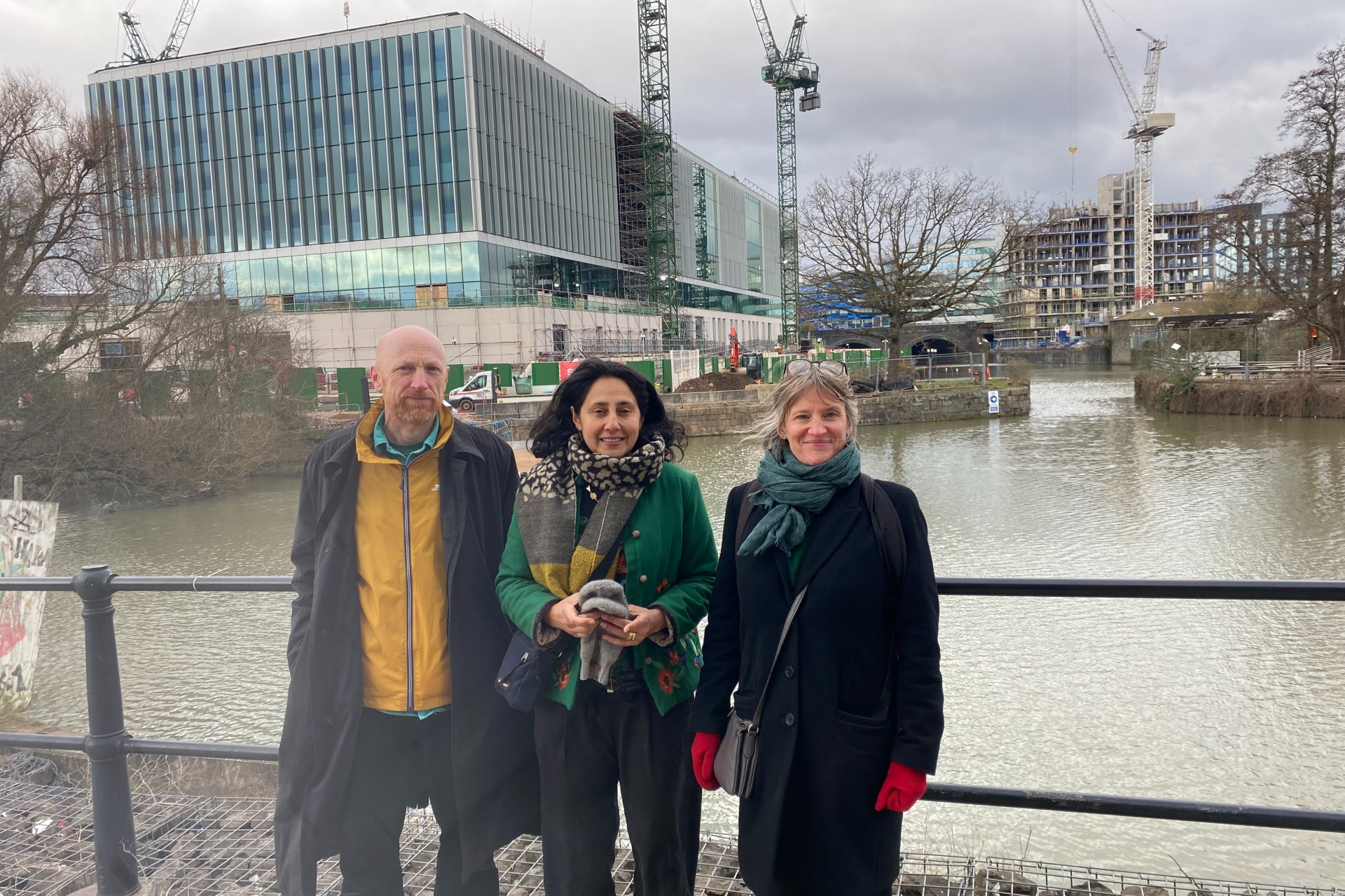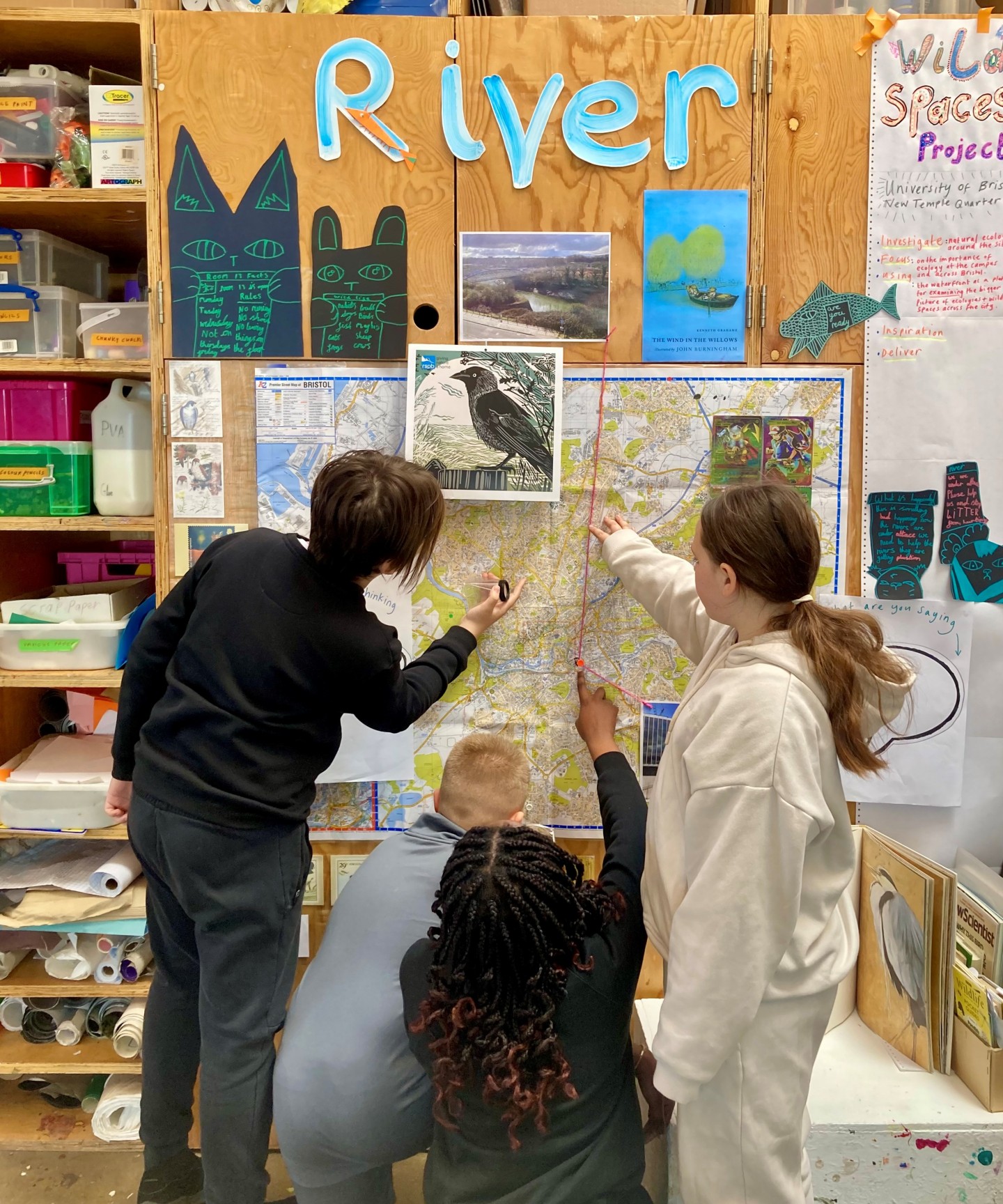Room 13 Hareclive will lead the Wild Spaces project working with communities, researchers and partner organisations to deliver temporary artworks alongside a programme of public participation activities that will take place alongside the construction of the new campus which is due for completion next year.
It will focus on the importance of ecology at the campus and across Bristol, using TQEC’s access to the waterfront as a platform for examining the bigger picture of ecologies and wild spaces across the city to understand the area’s natural landscape and the relationship between people and place.
The project will see the creation of temporary interventions that vividly animate themes of ecology and share this very special aspect of the site with wider audiences.
Room 13 Hareclive is an acclaimed arts education project that has been encouraging children’s creativity and voice in the same community for over twenty years. The studio - close to the University’s recently announced new micro-campus at the Gate House Centre in Hartcliffe - is run by the children that use it, working together with adults. The studio is open three days a week to children aged 5-11 who can go freely at breaks and lunchtimes where they can talk, draw, paint, experiment with materials, make, read, research and work on the computer.
Ten-year-old Honey is Co-Chairperson and Shop Manager at Room 13 Hareclive. She said: “This project makes us feel special because children don't usually get chosen for opportunities like this. You might not think children in Hartcliffe can do this kind of thing, but we can. We are imaginative, creative and have lots of good ideas. I feel good about this project because we can make the river interesting - and it might prevent people from throwing things in the river.”
Artist educators and co-founders of Room 13 Hareclive Shani Ali and Paul Bradley and co- worker and writer Ingrid Skeels added: “We are very excited to be working on the Wild Spaces commission. Our main focus will be rivers, and we are keen to look at these wild spaces with fresh eyes and share our findings with others through art and interventions. Rivers connect people and places across the city, including Hartcliffe and the TQEC site. Our journey will connect us with research and other expertise in the city to reveal some of the hidden magic in our waterways, big and small, that we can share with others.
“We also know that it is through knowledge and experience of nature that children and people of all ages can better care about it. This is a wonderful creative opportunity for Room 13 artists young and old. It is also an important and much needed chance to better connect Hartcliffe children and young people with the University, education and learning as well as with their city and a sense of belonging.”
The University’s Cabot Institute for the Environment is also supporting the young artists to connect with environmental researchers from across University of Bristol, to share their knowledge and explore environmental topics such as local waterways, wildlife and climate change
Wild Spaces is the third and final public art commission announced for the new campus following Bristol artists Wood and Harrison being appointed before Christmas to create a permanent artwork and Charting Change which is exploring the industrial heritage of the area.
Professor Beth Williamson, Chair of the University of Bristol’s Public Art Advisory Panel, said: “It has been a really fascinating and rewarding process meeting so many wonderful artists who expressed an interest in working with us on these three projects for the Temple Quarter Campus. I am delighted that all three are now up and running.”
The University is being supported on this venture by the Contemporary Art Society Consultancy who curate and manage a range of projects in different contexts and environments to produce collections, events and public art commissions across the UK.
Megan O'Shea, Senior Art Producer, said: “We’re thrilled to be working with Room 13 and excited to see how the rivers and routes from Hartcliffe to Temple Quarter spark the imagination of the children. The commission centres on a programme of activities rather than the development of a permanent artwork, so the adults and children involved are free to pursue small moments of inspiration and creativity.
“Hopefully, these moments of creativity might create a lasting memory for the children and encourage understanding that the wild spaces of Bristol, including around Temple Quarter, are for them to care for and explore. The sparks of inspiration may also lead to temporary artworks around the new campus for all users of the new spaces to enjoy.”
To find out more about public art at the University of Bristol visit the website and Instagram page. You can read more about Room 13 Hareclive on their website.

